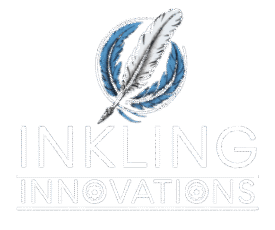Successful Copywriting Through The Power Of Storytelling

Successful copywriting emerges when you tap into the timeless art of storytelling. Storytelling in copywriting transforms simple product details into narratives that resonate and connect. This approach goes beyond listing benefits and features. It shapes emotional experiences so that the audience feels a part of the adventure.
The art of storytelling intersects with copywriting to create compelling messages. It lays the foundation for strong connections with clients and readers, adding depth to every word. With this foundation, words help sell ideas, products, and services in fresh, engaging ways.
The Power of Storytelling in Copywriting
Storytelling in copywriting carries a unique power. Stories are memorable. They stick in the mind long after facts have been forgotten. A well-crafted narrative connects on a human level, evoking emotions that drive action. When you tell a story, you invite the reader to experience the adventure along with you.
This method taps into emotional credibility. When a reader experiences a product or message through a story, it becomes personal. It helps establish trust. For example, relating personal struggles and eventual success can transform an ordinary product into something relatable. The narrative thereby emphasizes solutions that speak directly to individual challenges.
There are several key ingredients to successful storytelling in copywriting. One involves creating relatable characters and situations. Another focuses on conflict and resolution. This structure mirrors everyday experiences and makes the copy far more appealing than a list of dry statistics.
Storytelling benefits include boosted recall and improved engagement. In today’s cluttered market, grabbing attention is only the first step. Sustaining involvement and nurturing trust over time is what transforms occasional readers into steady customers.
Financial Possibilities in Copywriting
A common question in the world of copywriting is whether you can make $10,000 a month with this skill. Many seasoned copywriters have proved that it is indeed possible. With the right mix of storytelling skills, strategic planning, and a strong portfolio, reaching $10,000 per month is achievable. However, it often requires consistent effort and staying updated with market trends.
For beginners, kick things off or step up your copywriting career might seem daunting. Many professionals start with smaller projects and gradually build their expertise, reputation, and client base. Progress tends to be steady rather than immediate. The power of consistent storytelling and targeted messaging supports building long-term career momentum.
The transition from a modest side income to a robust monthly revenue is marked by learning, experimenting, and adapting. By refining your narrative techniques, you can better align your copy with the evolving tastes of your audience. Ultimately, strong storytelling paired with the right value proposition can lead to financial success over time.
Learning from the Best: Top Earners in Copywriting
Discussing successful copywriting inevitably leads to the discussion of top earners. Many wonder, “Who is the highest-paid copywriter?” Although there isn’t a single answer, history shows that legendary figures like Gary Halbert, Joe Sugarman, and Dan Kennedy earned a reputation for turning copywriting into a lucrative art form. These experts built their careers on a combination of persuasive storytelling and market savvy.
These pioneers not only excelled in their craft but also helped shape modern marketing strategies. Their work demonstrates that connecting with the audience is more valuable than flashy gimmicks. Their legacy encourages upcoming copywriters to focus on authenticity and clarity rather than just superficial tactics.
As for becoming a millionaire from copywriting, the answer is genuine potential. Many top copywriters and marketers eventually grew their earnings to seven or eight figures by mastering both copy and business acumen. It isn’t commonplace for every copywriter to become a millionaire overnight. Smart investing, switching things up in skills, and consistent creativity can build significant wealth over time.
The adventure from an entry-level copywriter to a top earner involves constant learning and can open paths to premium projects, partnerships, and even coaching roles. High earnings often correlate with reputation, a robust client network, and a unique storytelling voice that stands out in a crowded field.
Copywriting Demand in Today’s Market
Within the broader marketing industry, copywriting is still in demand. The need for compelling words isn’t waning as businesses continue to focus on digital communication. High-quality copy that resonates with audiences is something every business values, whether through email campaigns, social media posts, or longer forms of content marketing.
Can you live off copywriting? Many professionals have, and they continue to do so by diversifying their work. Some run freelance careers, while others hold roles in agencies or companies. With a combination of steady clients and the ability to handle projects independently, copywriting can serve as a full-time income source.
For those considering copywriting as a side hustle, it is indeed an effective and flexible option. It provides a way to test and build your skills without immediately committing full-time. Moreover, with the rise of remote work and digital marketing, balancing a day job with copywriting projects can be an excellent strategy to supplement income.
In today’s economy, smart involvement in copywriting helps provide a reliable stream of work. As long as you update your skills and continuously refine your narrative techniques, the field remains a promising option for both supplementary income and full-time pursuits.
Practical Storytelling Techniques for Effective Copywriting
 Developing your storytelling skills is central to creating involving copy. One straightforward method is to structure your copy like a story. Start by setting the scene: provide context for the product or service, and introduce challenges or customer struggles. Then, move to the turning point where your solution offers relief or transformation.
Developing your storytelling skills is central to creating involving copy. One straightforward method is to structure your copy like a story. Start by setting the scene: provide context for the product or service, and introduce challenges or customer struggles. Then, move to the turning point where your solution offers relief or transformation.
Use natural, conversational language that the reader finds relatable. Keep sentences clear and straightforward. The tone should be friendly and informative, ensuring that the reader feels as though the message is tailor-made for them.
Showing rather than telling remains key. Instead of simply listing benefits, illustrate how life improves with your product. For instance, create scenarios that mirror everyday challenges and let the narrative naturally include your offering as the solution.
Engaging examples might include recounting a situation where determination changed outcomes or where an unexpected twist led to success. Infuse your copy with specific details that evoke real-life experiences. This way, potential buyers can visualize the benefits, which ultimately increases the likelihood of a response.
Practical tactics include these steps: first, map out your story. Identify the key message you want to deliver. Next, consider the adventure your prospect might experience. Identify pain points and show how your product solves these issues. Finally, wrap up the story with a clear, direct call to action.
Invest in real examples and analyze successful campaigns. Books and courses from renowned copywriters can provide frameworks and concepts that you can adapt to your unique style. Not every narrative will work for every brand, so it’s beneficial to experiment with different storytelling structures until you find what resonates best with your audience.
Balancing Creativity with Marketing Goals
Good copywriting doesn’t mean discarding marketing goals in favor of creativity. Instead, the two need to work hand in hand. Stories not only get involved with the reader but also drive clear paths leading to conversions. This balance is very important even when the primary goal is to inform or entertain.
In practice, it means aligning your creative narrative with the product’s value proposition. Every word should serve both to captivate and to reinforce the call to action. The story should be authentic, mirroring the values and challenges of the audience while ensuring that business objectives are met.
Some campaigns win because of this balance. They effectively translate brand voices into meaningful encounters. Experienced copywriters continuously refine this blend to ensure the narrative feels genuine while still prompting the desired response. The most effective stories are those where marketing goals and authenticity coexist smoothly.
Innovation in narrative does not come by accident. It is honed by continuous experimentation and feedback. Using A/B testing or user feedback sessions can provide insights into what narrative styles work best. This approach ensures that your creative efforts are supported by measurable results.
Building a Sustainable Copywriting Career
Many new copywriters ask, “Can I become a millionaire from copywriting?” While dreams of high earnings are common, reaching such milestones typically requires experience, strategic planning, and a portfolio of successful projects. Achieving significant financial milestones in this field is a gradual process. With the right blend of skill, marketing savvy, and consistency, it is within the realm of possibility.
Establishing a sustainable career in copywriting often involves continual learning. The landscape of digital communication is always shifting. New trends and platforms emerge, meaning that keeping your skills updated is both necessary and rewarding. Many professionals also invest in mentorship and advanced training to stay at the top of their game.
For those starting their journey, building a recognizable brand might be the stepping stone toward financial success. As you develop a niche and a reliable client base, bigger projects and premium pay structures start to materialize. Many freelancers supplement their income by creating courses or writing books, further tapping into the demand for skilled storytelling in marketing.
Real-world examples abound of copywriters who have successfully created a lucrative niche by specializing in storytelling. Their success stories provide insight into the mix of creativity and business acumen needed to thrive. While becoming a millionaire isn’t guaranteed for everyone, effective storytelling can open doors to opportunities that significantly boost your earning potential over time.
Taking Action: Tips for Aspiring Copywriters
For anyone interested in kick-starting or stepping up their copywriting career, practical steps can help guide you along the way. Begin by practicing writing with a clear focus on conveying a story. Observe which narratives capture your attention and analyze why they work.
Invest time in studying both classic literature and modern marketing copy. Notice consistent elements that motivate and engage. Experiment with different forms of narration, and don’t be afraid to infuse a little personal creativity. Your unique perspective is valuable and can set your copy apart from the competition.
Connecting this practice with ongoing learning is beneficial. Many resources are available online—from webinars and e-books to professional courses offered by established copywriters. Each piece of advice can contribute to a better understanding of effective storytelling that drives involvement.
Networking with other copywriters can also be advantageous. Sharing experiences and discussing different approaches often brings fresh ideas. Peer feedback might reveal new ways to structure your narrative, helping you to fine-tune your voice and technique.
Practical habits such as daily writing drills, engaging in copy challenges, or even revising past work can reinforce your skills. Every piece of practice feeds into a sharper, more effective writing style. In time, this consistency translates into deeper audience connections and higher conversion rates. It also builds stronger client relationships.
By treating copywriting as both an art and a craft, you set the stage for ongoing growth. With determination and a willingness to adapt, storytelling can evolve from a niche skill into the backbone of a successful career.
Bottom line, storytelling in copywriting does more than just capture attention. It transforms how messages are perceived and remembered. When you integrate genuine narratives with clear marketing objectives, you build a bridge between the product and its audience. This fosters trust and encourages action.
The promise of making $10,000 a month, or even reaching millionaire status, is built on a foundation of skill, persistence, and the ability to connect deeply. Many high earners started with small steps and learned from each project, continually refining their voice to achieve success.
As long as businesses value authenticity and connection, skilled copywriters will continue to have plenty of opportunities. Whether pursuing it full-time or as a side hustle, the demand for creative storytelling remains robust and full of potential.
Embracing storytelling is not merely a trend. It is a practical way to give a boost to your copywriting career. I encourage everyone interested in this field to experiment, learn, and grow from each challenge. Over time, your progress will mirror the very narratives you craft: unique, evolving, and unforgettable.
Ultimately, the adventure in copywriting is as much about mastering the art of storytelling as it is about understanding the needs of your audience. With practice, industry insight, and a deep respect for narrative techniques, building a long-lasting and lucrative career in copywriting is very much within reach. Explore the landscape, build your portfolio, and let each story you craft add to your growth. Your success as a copywriter is measured not just in earnings, but in the genuine connections you forge through impactful storytelling.
Looking Ahead: Future Trends in Copywriting
The world of copywriting is evolving faster than ever before. Emerging technologies and new digital platforms are reshaping how stories are told. As artificial intelligence and machine learning become parts of the creative process, copywriters are finding innovative ways to craft messages that remain human and relatable. In this changing landscape, maintaining authenticity and a personal touch is very important.
Experts predict that future trends will include a stronger focus on interactive storytelling and multimedia integration. Copywriters have started using video, audio, and interactive graphics to pull back the curtain on brand stories. This shift not only creates next-level rizz experiences but also allows audiences to engage in ways never seen before. The move toward interactive content means that the classic narrative will be blended with dynamic visuals and real-time feedback.
Furthermore, with the rise of social media and micro-content, storytelling is shifting from long-form narratives to bite-sized adventures that capture attention within seconds. This change challenges copywriters to think outside the box and get creative quickly. The capacity to mix traditional storytelling structures with modern digital techniques will be very important for career sustainability.
Finally, as data continues to drive marketing strategies, future copywriters will need to balance creative flair with analytical insights. They will use real-time feedback to shape and adjust their narratives. This alignment of art and analytics is expected to be the next stage in the evolution of copywriting, ensuring that your message not only resonates emotionally but also plays a strategic role in business success.
Looking ahead, the field of copywriting promises exciting opportunities for those willing to adapt and innovate. With continuous learning and openness to new ideas, the future is bright for creative storytellers ready to make their mark in the digital age.







I found your insights on integrating storytelling into copywriting truly enlightening. Your point about narratives transforming simple product details into resonant experiences really struck a chord with me. It’s fascinating how relatable characters and conflict-resolution structures can elevate marketing messages. I’m curious, do you have a favorite example where storytelling significantly boosted a campaign’s effectiveness? Thank you for sharing such valuable perspectives on this powerful approach.
It makes a lot of sense to use story telling in your writing, as it engages people more. I always love reading a great story rather than a bunch of boring text randomly strewn together. It is great if you can use personal things that have happened to you and translate them into something that can help somebody with a moral or a reason why they need a certain product. I think if you can get this aspect of copy writing perfected, you will have a very successful career.
This post truly resonated with me! I’ve been seriously considering building a career as a copywriter, and the emphasis on storytelling here really hit home. As someone who’s always loved writing and connecting through words, the idea of turning those skills into something impactful—and potentially profitable—is incredibly motivating.
I’m still in the early stages of learning and practicing, but posts like this make the path feel a little clearer. I’d love to hear from others who are either just starting out or already on this journey—what was your first “aha” moment in copywriting? And how did storytelling shape your growth? Let’s share experiences!
Thanks for commenting Alice. I don’t believe I had an “aha” moment in copywriting. I can remember wanting to be a better writer and I enjoyed playing around in my imagination. Combining the stories in my head and bringing them to life on the page started becoming an addiction of sorts. Mainly, my love for storytelling spilled over into marketing, and surprise, people like hearing stories about products and services not just shoving a sales pitch in their face.